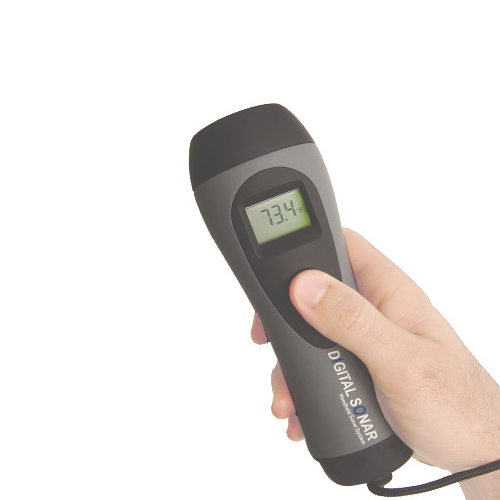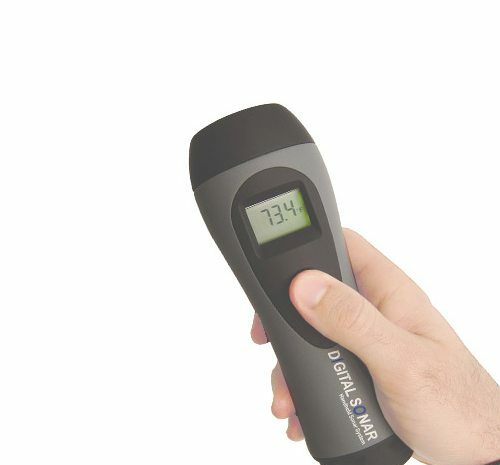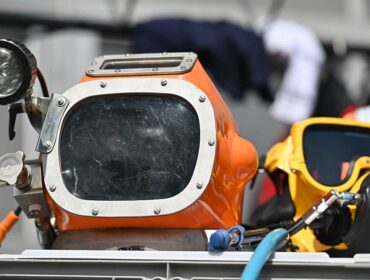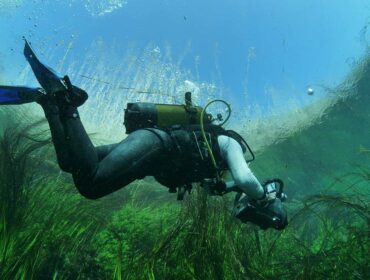We’ll admit there are quite a few Scuba Toys and nice to have gadgets out there in the market that would make you crazy if you were a scuba gadget freak. It’s often difficult to tell whether you actually need something or not, and which product is the best for your requirements. Today we take a closer look at an interesting device, handheld Scuba Sonar which is a handy device to have around, but do you really want another item clipped on to your BCD? We’ll let you decide.
Sonar devices being used in Scuba Diving is not a new concept. Although used heavily by fishermen, underwater surveyors, search & retrieval groups, Ice Fishing etc. Many scuba divers use sonar devices on their dive boats that help them pinpoint dive sites and wrecks, and discover new sites and spot fish. However these devices are large, expensive and need to be fitted to the boat offering little or no portability.

Handheld Sonar devices however are a new gadget to be introduced to recreational diving, and with enhancements in miniaturization of circuitry and extended battery life, devices such as the Hawk Eye Handheld Digital Sonar System are becoming increasingly affordable and popular with recreational scuba divers, and can be used for fishing, ice-fishing and snorkeling as well.
Other forms of hand-held sonar include the LIMIS (= Limpet Mine Imaging Sonar) designed for patrol divers to clear mines in low visibility but has found commercial use though still extremely costly and larger in size.
Although not as sophisticated as the larger versions, handheld sonar operate more as a range-finder using Sonar (Sound Navigation and Ranging) technology in which a pulse of sound(called a Ping) is transmitted and distance measured off a receptor that calculates range based on the time taken for the signal to return.
Hand-held sonar has its applications in Scuba Diving in so many ways. It can be used Scanning for depth changes, making it ideal to locate your dive site, which may be a wall or a drop-off, or even pinpoint a ship wreck. The device is even more useful to those who need to reach their dive sites without a dive boat. The hand-held sonar device will allow a diver to drop directly on to your target, after a surface swim which may be a wall, a drop-off or a wreck without wasting precious air exactly at the depth you wish to dive to. Those of you who have shore-dived before will know how difficult it is to find that drop-off or wall, or wreck accurately.
Some day we may see adoption of technologies made popular in motorcycle GPS units, known for rough conditions and compact size, that will allow us to navigate to dive sites as easily as in our cars, but for now we’re limited as divers.
Handheld sonar is a great tool for exploratory dives, and locating new and interesting dive sites without fancy boat mounted equipment. Mapping dive sites has never been easier, and depth and distance measurements being recorded during the dive make this a simple task. With the added feature of the fish finder which is found on the Hawkeye Handheld Digital Sonar System, which lets the user know when fish pass through the sonar ping by flashing a fish icon on the display. A great, compact fish finder is helpful in locating large shoals of fish or the presence of marine life for your exploratory dive, or spear fishing trip.
The Hand held sonar range finder allows you to point it at the surface, boat, wreck, reef, etc and instantly know how far away the object or the surface is, which will help divers plan their time, and return trip to the boat comfortably. Most devices also feature temperature sensors as well which allow you to measure changes in water temperature which is an added benefit. In murky waters and poor visibility dives, several users of the hand held sonar have used it as a buddy locator if necessary.





